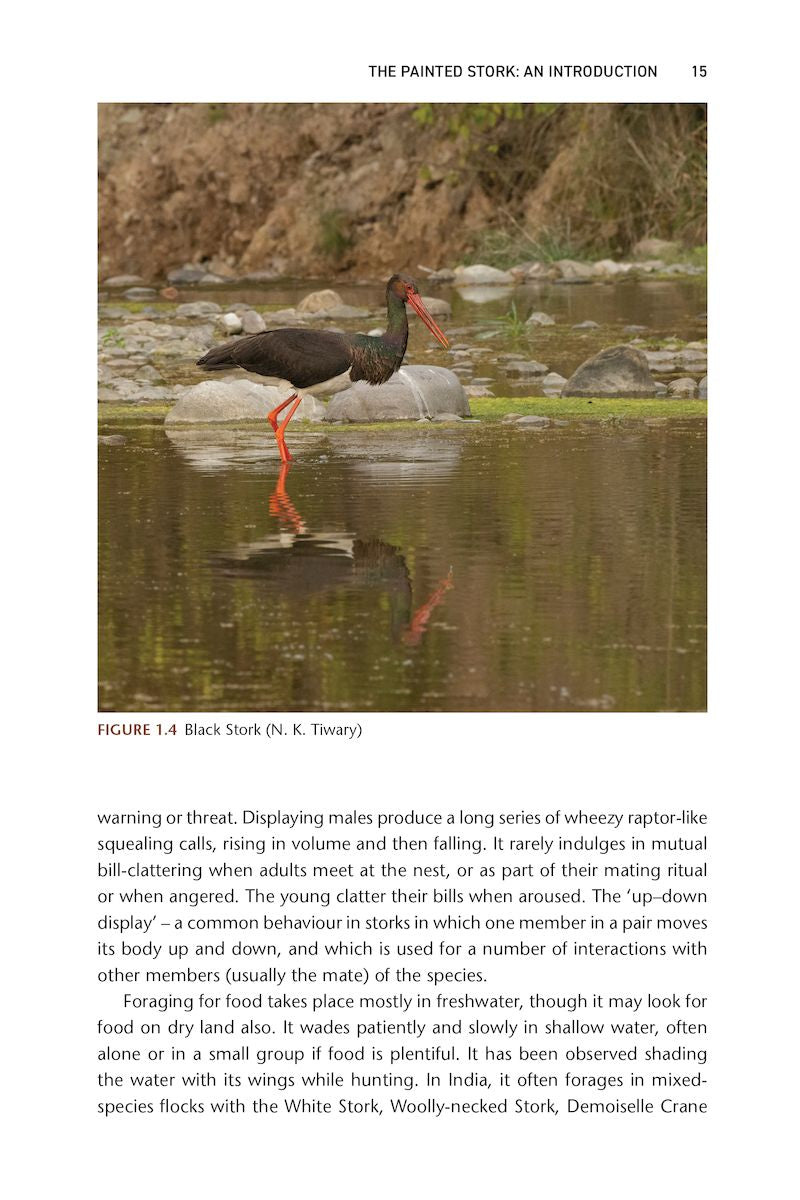| Author | Abdul Jamil Urfi |
| Language | English |
| ISBN | 9781784274399 |
| Publisher | Pelagic Publishing |
| Pages | 191 |
| Size | 156 x 234 mm |
| Format | Softcover |
| Images | Colour images |
| Year published | 2024 |
A charismatic and arresting bird, the Painted Stork inhabits the plains and wetlands of India and Southeast Asia. This near-threatened species provides a good model through which to explore a variety of ecology and conservation issues. As a colonial nester, it is also useful for considering questions related to evolution and the development of avian coloniality. The Painted Stork sometimes nests opportunistically in the middle of large cities – the Delhi Zoo colony, for instance, has been active since 1960. This offers a splendid opportunity to study the species at close range, as attested by this book's lively photographic component.
The Painted Stork is an important indicator of its wetland habitats, which themselves are highly threatened. Since environmental toxins, particularly organochlorine pesticides, travel rapidly along aquatic food chains, the study of piscivorous birds like the Painted Stork assumes special significance. Equally vulnerable today are the nesting colonies, located in marshes, village reservoirs and the wider countryside, including in urban settings. Perhaps because their natural nesting areas are becoming scarce due to habitat loss, colonial waterbirds look for suitable sites in parks and gardens. Hence, the behaviour of this species reflects changes occurring in its environment.
Birds also help us monitor the effects of global climate change, and one of the most significant dimensions of the Painted Stork is its dependence upon the monsoon. How exactly do these seasonal rains govern the food cycles in wetlands? And what happens when the monsoon fails? Covering all aspects of Painted Stork ecology, behaviour, conservation and its relationship with humans, this accessible monograph contains a wealth of new insights.



















